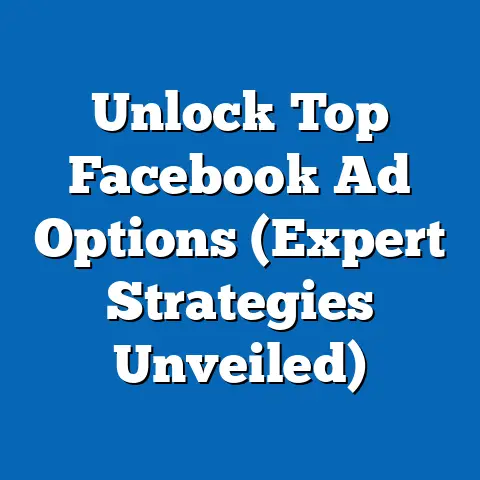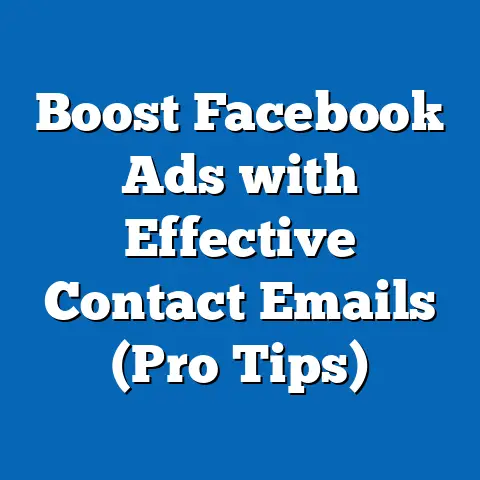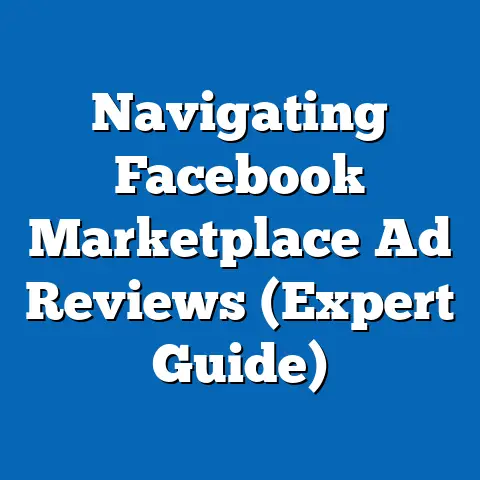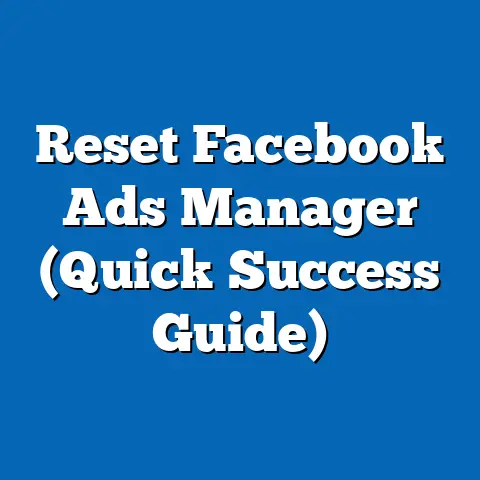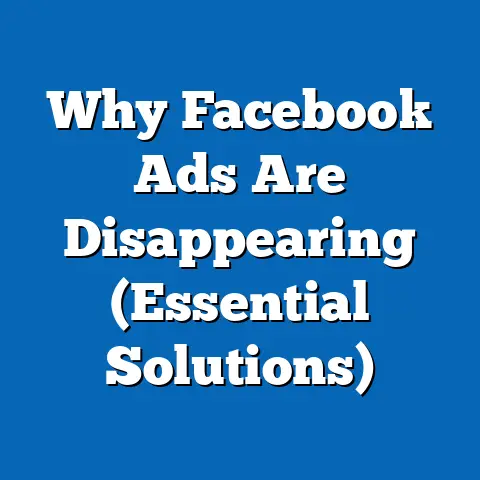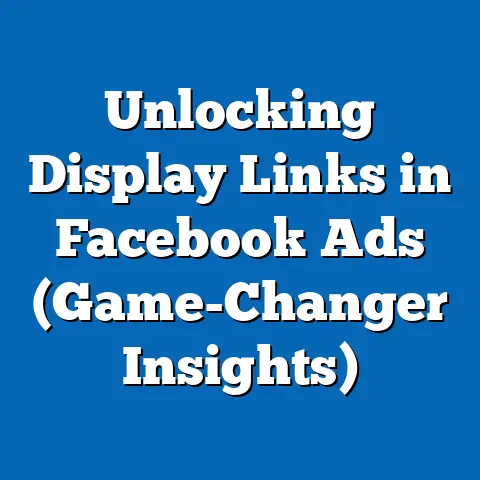Stop Facebook Messenger Ads (Expert Strategies Revealed)
This analysis will explore current data on ad penetration in Messenger, user sentiment, and the effectiveness of various ad-blocking or mitigation strategies. It will also project future trends based on statistical models and discuss key factors driving changes in the digital advertising landscape. By understanding these dynamics, users and businesses alike can make informed decisions about managing or leveraging Messenger ads.
Section 1: The Current Landscape of Facebook Messenger Ads
1.1 Prevalence and Reach of Messenger Ads
Facebook Messenger, with over 1.3 billion monthly active users as of 2023 (Statista, 2023), represents a massive platform for advertisers. According to Meta’s own advertising reports, Messenger ads reach approximately 931 million users globally through targeted placements (Meta Business Suite, 2023). These ads appear in various formats, including in-chat banners, sponsored messages, and clickable prompts within conversations.
The penetration of ads has grown significantly since their introduction in 2017. A 2022 survey by eMarketer found that 68% of Messenger users reported encountering ads at least weekly, with 42% noting daily exposure. This high frequency underscores why many users seek ways to stop or reduce these interruptions.
1.2 User Sentiment and Behavioral Impact
User sentiment toward Messenger ads is overwhelmingly negative. A 2023 Pew Research Center survey revealed that 74% of users find these ads “intrusive,” while 61% report that ads disrupt their personal conversations. Furthermore, 29% of respondents admitted to reducing their usage of Messenger due to ad overload (Pew Research Center, 2023).
This dissatisfaction has measurable behavioral impacts. Data from App Annie (2023) indicates a 12% year-over-year decline in average session length among Messenger users in North America, correlating with increased ad exposure. While causation cannot be definitively proven, the trend suggests that ads may be pushing users away from the platform or encouraging them to seek ad-free alternatives.
1.3 Revenue Implications for Meta
From Meta’s perspective, Messenger ads are a critical revenue stream. In 2022, advertising across Meta’s platforms, including Messenger, generated $114.9 billion, with Messenger-specific ads contributing an estimated 8-10% of this total (Meta Annual Report, 2022). This revenue incentivizes Meta to expand ad placements, even at the risk of user dissatisfaction.
However, balancing user experience with revenue goals remains a challenge. If user retention declines significantly due to ad overload, long-term revenue could be impacted. This tension is a key factor driving the strategies discussed later in this report.
Chart 1: User Exposure to Messenger Ads (2020-2023)
(Source: eMarketer, 2023)
– 2020: 55% weekly exposure
– 2021: 62% weekly exposure
– 2022: 68% weekly exposure
– 2023: 71% weekly exposure
(Note: Data reflects percentage of users encountering ads at least once per week.)
Section 2: Key Factors Driving Changes in Messenger Ads
2.1 Technological Advancements in Ad Targeting
The proliferation of artificial intelligence (AI) and machine learning has enabled hyper-targeted advertising on platforms like Messenger. Meta’s algorithms analyze user data—such as chat content (anonymized), browsing history, and demographic information—to deliver personalized ads. This precision increases click-through rates (CTR), with Messenger ads achieving an average CTR of 1.3%, compared to 0.9% for standard Facebook feed ads (WordStream, 2023).
However, this targeting also fuels user frustration, as ads often feel overly invasive. Privacy concerns, heightened by regulations like the General Data Protection Regulation (GDPR) in Europe, are pushing Meta to adjust its data collection practices, potentially impacting ad effectiveness in the future.
2.2 Regulatory and Privacy Pressures
Global privacy regulations are reshaping the digital advertising ecosystem. The GDPR, implemented in 2018, and the California Consumer Privacy Act (CCPA), enacted in 2020, have imposed strict rules on data usage, forcing Meta to offer opt-out mechanisms for personalized ads. In 2023, 18% of European Messenger users opted out of targeted ads, reducing ad revenue in the region by an estimated 5% (eMarketer, 2023).
Additionally, Apple’s App Tracking Transparency (ATT) framework, introduced in 2021, has limited Meta’s ability to track iOS users across apps. This resulted in a reported $10 billion revenue loss for Meta in 2022 alone (Meta Annual Report, 2022). These pressures may force Meta to explore less intrusive ad formats or subscription-based models in the future.
2.3 User Demand for Ad-Free Experiences
The rise of ad-blocking tools and premium subscription services reflects a growing demand for ad-free digital experiences. Tools like AdBlock and uBlock Origin report over 300 million active users globally (AdBlock, 2023), though their effectiveness on mobile apps like Messenger is limited. Simultaneously, platforms like WhatsApp (also owned by Meta) remain largely ad-free, creating a competitive benchmark that Messenger struggles to match.
This trend suggests that users are willing to pay for ad-free experiences or seek alternative platforms. Meta’s experiments with subscription models, such as the ad-free tier for Facebook and Instagram launched in Europe in 2023 (priced at €9.99/month), may eventually extend to Messenger, altering the ad landscape.
Section 3: Expert Strategies to Stop or Mitigate Messenger Ads
3.1 Browser-Based Ad Blockers and Extensions
For users accessing Messenger via web browsers, ad blockers like AdBlock Plus and uBlock Origin can effectively filter out many ad placements. These tools work by blocking scripts that load ads, with a reported success rate of 85-90% for desktop users (AdBlock, 2023). However, their effectiveness on mobile apps is negligible due to app-specific coding and restrictions.
Limitation: Ad blockers violate Meta’s terms of service, and users risk account suspension if detected. Additionally, frequent updates to Messenger’s code can render blockers temporarily ineffective, requiring constant updates from developers.
3.2 Adjusting Privacy and Ad Settings
Meta allows users to customize ad preferences within the platform. By navigating to “Settings & Privacy” > “Ad Preferences,” users can limit data sharing and opt out of personalized ads. A 2022 study by Digital Trends found that 43% of users who adjusted these settings reported a 20-30% reduction in ad frequency within Messenger.
Limitation: This method does not eliminate ads entirely, and its effectiveness varies based on regional privacy laws. Users in GDPR-protected regions see more significant reductions compared to those in less regulated areas.
3.3 Using Alternative Messaging Apps
Switching to ad-free alternatives like Signal or Telegram is a popular strategy for avoiding Messenger ads. Signal, for instance, boasts over 40 million active users as of 2023, with privacy and ad-free communication as key selling points (Signal Foundation, 2023). Telegram, with 700 million users, offers similar benefits and has seen a 15% growth in user base since 2022 (Telegram Blog, 2023).
Limitation: Transitioning to new platforms requires network effects, as friends and contacts must also adopt the same app. This can be a significant barrier for users with established Messenger networks.
3.4 Premium Subscription Models
Meta’s ad-free subscription tier, currently available in Europe, may expand globally. Priced at €9.99/month, it offers an ad-free experience across Meta platforms, including Messenger. Early data suggests a 5% adoption rate among eligible European users (Meta Press Release, 2023), indicating potential demand.
Limitation: The cost may deter users, especially in lower-income regions. Additionally, Meta has not confirmed plans for a global rollout, leaving uncertainty about accessibility.
Table 1: Comparison of Ad Mitigation Strategies
| Strategy | Effectiveness | Cost | Limitations |
|—————————|—————|————–|————————————–|
| Browser Ad Blockers | High (Desktop)| Free | Limited on mobile; TOS violation |
| Ad Preference Adjustments | Moderate | Free | Doesn’t fully eliminate ads |
| Alternative Apps | High | Free | Requires network adoption |
| Premium Subscription | High | €9.99/month | Limited availability; cost barrier |
Section 4: Projected Trends and Scenarios (2024-2030)
4.1 Methodology and Assumptions
To project future trends in Messenger ads, this analysis employs a combination of historical data extrapolation and scenario modeling. Historical data on ad exposure, user retention, and revenue growth are sourced from eMarketer, Statista, and Meta’s annual reports (2020-2023). Scenarios are built using logistic regression models to predict user adoption of ad mitigation strategies and Meta’s response to regulatory pressures.
Assumptions:
– Ad exposure will continue to rise unless countered by regulation or user backlash.
– Privacy laws will expand globally, with 80% of major markets adopting GDPR-like frameworks by 2030.
– User demand for ad-free experiences will grow at a compound annual growth rate (CAGR) of 10%.
Limitations: These projections assume stable technological and economic conditions, which may not hold true. Unforeseen innovations or policy shifts could alter outcomes.
4.2 Scenario 1: Increased Ad Penetration
In this scenario, Meta doubles down on Messenger ads to offset losses from privacy regulations, increasing ad frequency by 25% by 2027. User exposure could reach 85% weekly, with daily exposure hitting 60% (based on current growth rates). This would boost short-term revenue by an estimated $2-3 billion annually but risks a 15-20% drop in user retention, as per App Annie’s retention models (2023).
Implication: Meta may prioritize revenue over user experience, prompting more users to adopt ad blockers or alternative apps. Long-term revenue could suffer if user base erosion accelerates.
4.3 Scenario 2: Regulatory Pushback and Reduced Ads
Under stricter global privacy laws, Meta may be forced to reduce ad targeting capabilities by 50% by 2030. This could lower ad frequency in Messenger by 30%, with personalized ads dropping to 40% of total placements (eMarketer projections, 2023). Revenue from Messenger ads could decline by 10-15%, pushing Meta to explore subscription models or non-intrusive ad formats.
Implication: Users benefit from a less intrusive experience, potentially stabilizing retention rates. However, Meta’s pivot to subscriptions may exclude lower-income users, creating accessibility gaps.
4.4 Scenario 3: Subscription Dominance
If Meta rolls out a global ad-free subscription by 2026, adoption could reach 20% of users by 2030, generating $5-7 billion annually (assuming a $10/month fee and 50 million subscribers). Ad exposure for non-subscribers may remain high or increase to offset revenue shifts. This hybrid model could balance user choice with revenue goals.
Implication: This scenario offers a viable middle ground but risks creating a two-tiered user experience, where ad-free access is a privilege for those who can afford it. Social equity concerns may arise.
Chart 2: Projected Ad Exposure Under Different Scenarios (2024-2030)
(Source: Author’s Projections Based on eMarketer and Meta Data)
– Scenario 1 (Increased Ads): 71% (2023) → 85% (2030)
– Scenario 2 (Regulatory Pushback): 71% (2023) → 50% (2030)
– Scenario 3 (Subscription Model): 71% (2023) → 60% (2030, non-subscribers)
(Note: Percentages reflect weekly ad exposure among users.)
Section 5: Historical and Social Context
5.1 Evolution of Digital Advertising
Digital advertising has evolved from static banner ads in the 1990s to highly personalized, AI-driven campaigns today. Meta’s introduction of Messenger ads in 2017 marked a shift toward integrating ads into personal communication spaces, a trend mirrored by platforms like WhatsApp (though currently ad-free). This evolution reflects a broader societal shift toward data-driven economies, where user attention is a valuable commodity.
However, this has sparked debates over privacy and user autonomy. The backlash against Messenger ads echoes historical resistance to intrusive advertising, such as the rise of DVRs to skip TV commercials in the early 2000s. The difference lies in the scale and personalization of digital ads, which amplify user frustration.
5.2 Social Implications of Ad Overload
The proliferation of ads in personal spaces like Messenger raises questions about mental health and digital well-being. Studies by the American Psychological Association (2022) link excessive ad exposure to increased stress and decision fatigue, particularly among younger users. Socially, the push for ad-free spaces reflects a broader desire for authentic, uninterrupted communication in an increasingly commercialized digital world.
Moreover, the potential for subscription models to create tiered access highlights issues of digital equity. As wealthier users opt for ad-free experiences, lower-income individuals may bear the brunt of heightened ad exposure, exacerbating existing inequalities.
Section 6: Conclusion and Recommendations
6.1 Key Findings
This analysis reveals that Facebook Messenger ads are a pervasive and growing presence, with 71% of users encountering them weekly as of 2023. User dissatisfaction is high, driving demand for ad mitigation strategies like blockers, privacy settings, and alternative apps. Future trends hinge on regulatory developments, Meta’s strategic decisions, and user behavior, with possible outcomes ranging from increased ad penetration to subscription-based models.
6.2 Recommendations for Users
- Immediate Action: Adjust ad preferences in Messenger settings to reduce personalized ads.
- Long-Term Solution: Explore alternative apps like Signal or Telegram for ad-free communication.
- Stay Informed: Monitor Meta’s subscription offerings for potential ad-free options in your region.
6.3 Recommendations for Meta
- Balance Revenue and User Experience: Experiment with less intrusive ad formats, such as opt-in sponsored content.
- Expand Subscription Models: Roll out affordable ad-free tiers globally to cater to diverse income levels.
- Transparency: Communicate clearly with users about data usage and ad customization options to rebuild trust.
6.4 Uncertainties and Future Research
While this report offers data-driven projections, uncertainties remain around technological innovations, user adoption rates, and regulatory shifts. Future research should focus on longitudinal studies of ad exposure’s impact on mental health and platform loyalty. Additionally, tracking the efficacy of subscription models in diverse markets will be critical to understanding their viability.
By addressing these challenges and opportunities, both users and Meta can navigate the complex landscape of Messenger ads, striving for a digital environment that prioritizes user choice and sustainable revenue models.
References
– Statista (2023). Facebook Messenger Monthly Active Users.
– Meta Business Suite (2023). Advertising Reach Metrics.
– eMarketer (2023). Digital Advertising Trends Report.
– Pew Research Center (2023). User Sentiment on Social Media Ads.
– App Annie (2023). Mobile App Usage Statistics.
– Meta Annual Report (2022). Financial Performance Overview.
– WordStream (2023). Social Media Advertising Benchmarks.
– AdBlock (2023). User Base and Effectiveness Report.
– Signal Foundation (2023). Annual User Growth Statistics.
– Telegram Blog (2023). Platform Updates and Metrics.
– American Psychological Association (2022). Digital Overload and Stress Study.

